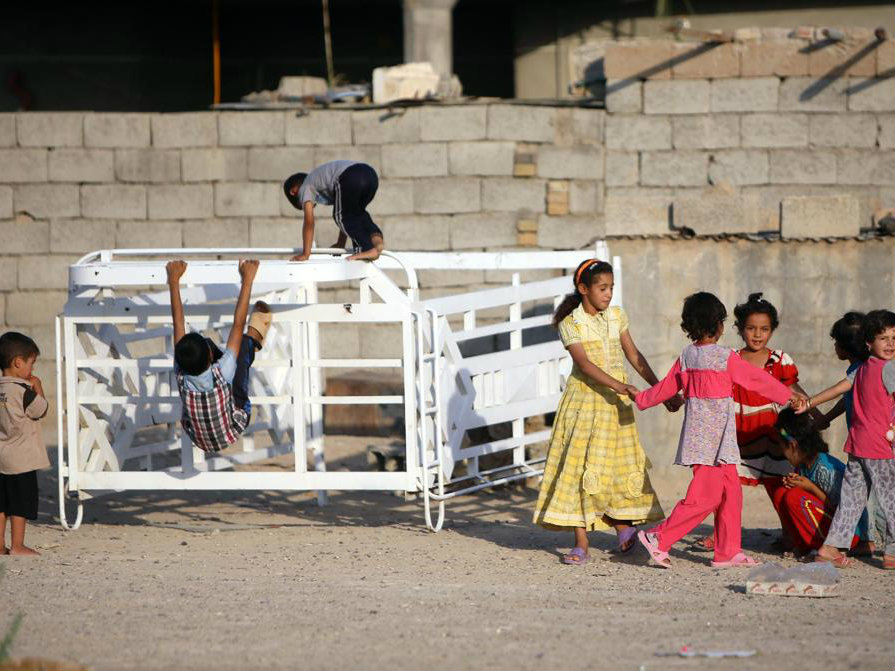Only the scattered voices of Kurdish fighters break the silence in the Iraqi village of Wadi Osaj, where the mud and cement block houses stand empty and locked after residents fled.
The village in Diyala province, northeast of Baghdad, had been a bustling hamlet populated by some 50 Sunni Arab families.
Now it is an eerie outpost for Kurdish peshmerga forces battling to wrest the Jalawla area from the control of the brutal jihadist Islamic State (IS) group.
The peshmerga retook the village from IS fighters just a few days earlier, but signs of the threat are still visible, with two black flags flying on a road that lines hills in the distance.
The town of Jalawla, now besieged by Kurdish troops, can be seen spreading across the horizon from the desert hilltops near Wadi Osaj.
Residents of the village fled earlier this month when heavy fighting broke out in the area, fearing both peshmerga shellfire and the prospect of being swallowed into the swathes of territory that IS-led fighters have seized since they launched a sweeping offensive in June.
Though the families have only been gone a few weeks, a look through the window of one house in the village reveals it to be eerily empty, as if they have never been lived in at all.
The door to a storeroom is open, and a bullet casing lies in the dirt near its cracked window.
The officer and other Kurdish troops insist they have “strict instructions” that the houses are off-limits.
According to the peshmerga fighters, some residents who fled the violence have come back to collect their belongings since the jihadists retreated.
But until nearby Jalawla is out of IS hands, displaced families will not be allowed to move back, they say.
A red, white and green flag of Iraq’s autonomous Kurdish region, a bright yellow sun at its centre, flutters on a hilltop overlooking the village.
Wadi Osaj falls into one of many areas that Iraqi Kurds want to incorporate into their northern autonomous region, over Baghdad’s objections.
It was “Arabised” under dictator Saddam Hussein, who brought Arabs to replace Kurds in some areas.
– ‘Nowhere to go’ –
Some villagers have taken refuge in Nawduman, another Sunni Arab village about seven kilometres (four miles) east that has so far been spared from the violence.
Ali Mohammed Jassem, a father of four wearing a light blue robe and beige vest, a white scarf on his head, longs to return to Wadi Osaj.
His family is now sleeping in the mosque. His wife says they have no mattresses.
But the couple say they are among Wadi Osaj’s luckier residents.
– Desire for safety –
His family fled Wadi Osaj before the jihadists arrived.
Jassem’s 11-month-old child, Zaina, cries as her teenaged sister changes her clothes, but quickly calms down when she sits on her father’s lap.
Asked whether he would want to live under IS control, he says: “I don’t want to live under someone who hurts me, (whose presence) has forced me to flee my home.”
He wants either the Kurds or the Iraqi army to take over.
A Sunni Arab local official in Nawduman, Sayed Ahmed, echoes Jassem’s words.

COMMENTS
Please let us know if you're having issues with commenting.